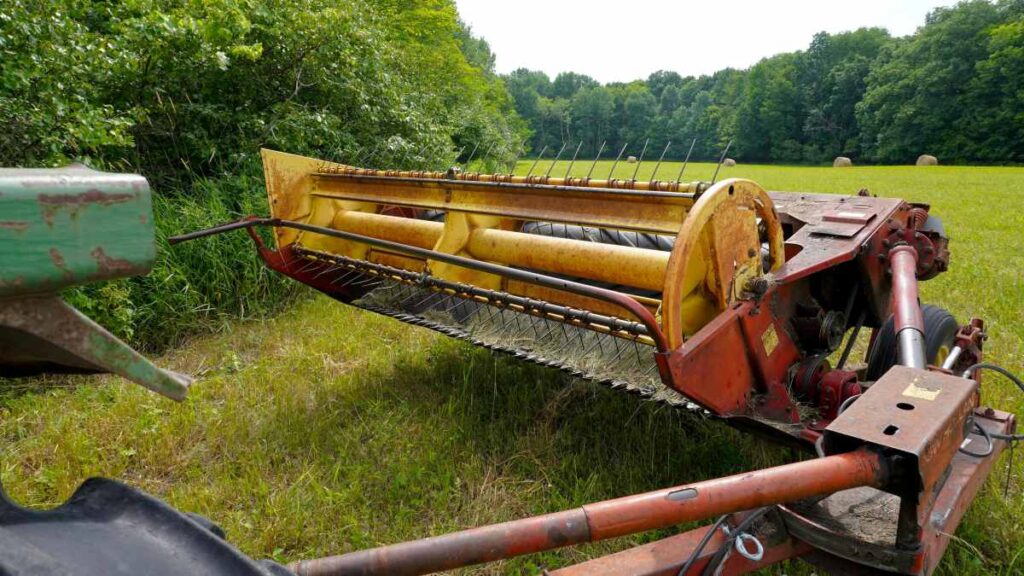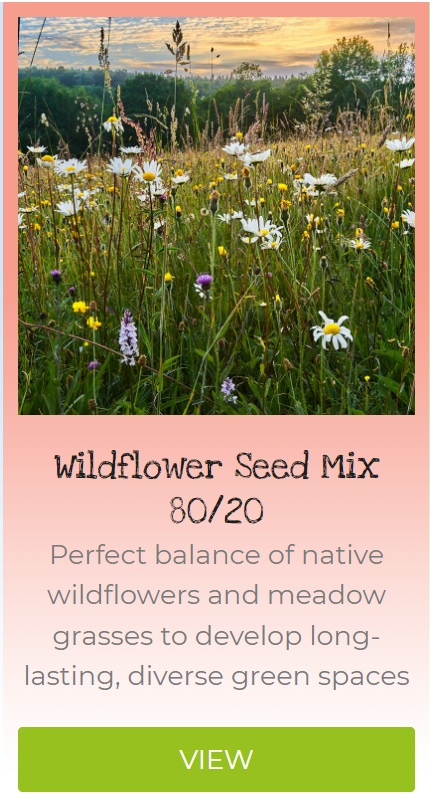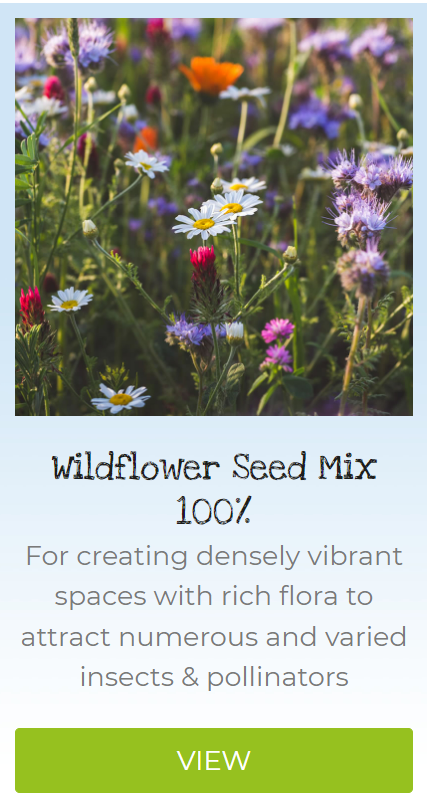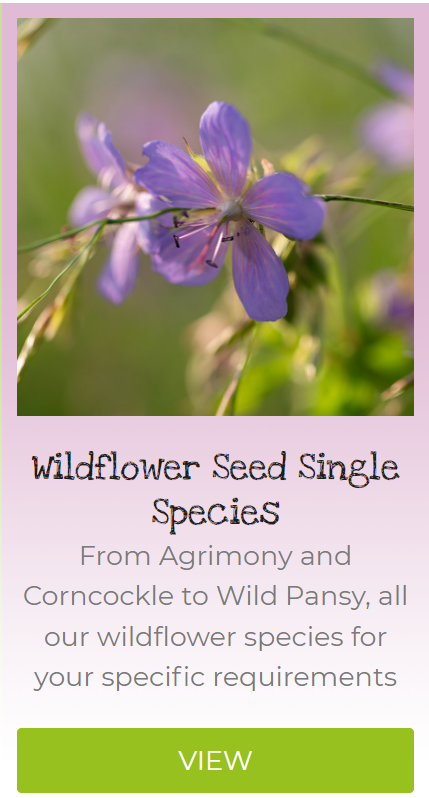Wildflowers of the Weald: A Guide to Species Selection and Sowing in Heavy Clay Soil
The Weald, an enchanting and historically rich region, spans Southeast England, encompassing parts of Kent, Sussex, Surrey, and Hampshire. This area is renowned for its distinctive geology, predominantly featuring heavy clay soils interspersed with regions of loam and sandstone, which have shaped its landscape and agricultural practices over centuries.
The Weald’s soil type, particularly its clay-rich areas, supports diverse wildflower species, making it a haven for biodiversity. Among its rolling hills and ancient woodlands, one can find a plethora of wildflowers, such as the striking bluebell, the vibrant poppy, and the rare orchids, each contributing to the tapestry of colour that blankets the region in spring and summer.
The Weald’s unique combination of soil, topography, and climate fosters a rich ecosystem where these wildflowers thrive, attracting a wide range of pollinators and wildlife, thus sustaining the area’s natural beauty and ecological importance.
Understanding Heavy Clay Soil and Its Challenges for Growing Wildflowers
Heavy clay soil can pose challenges for growing wildflowers, but with the proper techniques, you can have a thriving wildflower meadow.
Clay soil has tiny particles that pack together tightly, reducing airflow and drainage.
Good Drainage Is Essential
For wildflowers to thrive, improving drainage is vital. You have a few options:
- Add compost or peat moss, which helps loosen soil structure and improves drainage. Aim for 2 to 3 inches of organic matter tilled into the top 6 to 8 inches of soil.
- Create raised beds. The raised areas provide better drainage. You only need to raise the soil by 6 to 12 inches for most wildflowers.
- Install drainage pipes. For severely poor drainage, you may need to install perforated pipes to help move water away from the roots.
Select wildflowers adapted to clay soil that can tolerate some moisture. Some excellent options include foxglove, red campion, oxeye daisy, meadow cranesbill, and devil’s bit scabious. Avoid wildflowers requiring fast-draining, sandy soil.

Providing the Right Conditions
Once you’ve improved drainage and selected appropriate wildflowers, provide the right conditions for germination and growth:
- Prepare the soil in autumn and sow in spring after the last frost. This allows rain and snowmelt to penetrate the soil.
- Rake the soil to create a fine seedbed. Tiny seeds need good contact with the soil to germinate.
- Water regularly, especially for the first few months after sowing. Only water when the top few inches become dry.
- Mow once flowering is done to prevent self-seeding. Leave 6 to 8 inches of growth to overwinter.
You’ll enjoy a sea of colourful wildflowers for years with the proper techniques for your heavy clay soil. Success is within your reach if you start with good drainage, choose suitable wildflowers, and provide the conditions for them to thrive.
Five Wildflower Species That Thrive in Heavy Clay Soils
If you want to transform your heavy clay soil into a wildflower wonderland, here are the top 5 species to consider:
Cornflower (Centaurea cyanus)
This bright blue beauty is perfect for clay, thriving in full sun and poor soil. Drought-tolerant once established, cornflowers attract pollinators and bloom for weeks. Scatter the seeds in fall or spring and rake them into the soil.
Poppy (Papaver rhoeas)
The vibrant red flowers of the common poppy are a showstopper in any garden. Poppies prefer alkaline clay soil and full sun. Sow seeds directly where you want them to bloom.
Oxeye Daisy (Leucanthemum vulgare)
The oxeye daisy is a cheerful addition to clay soil with its bright white petals and yellow centre. It spreads readily, so plant it in a confined spot or container. Sow seeds in fall or spring and thin seedlings to 8-12 inches apart.
Black-Eyed Susan (Rudbeckia hirta)
A North American native, the black-eyed Susan thrives in clay and blooms for months. It grows 2 to 3 feet tall, with golden petals and a dark brown centre. Direct sow in spring or fall, thinning to at least 6 inches apart.
Yarrow (Achillea millefolium)
Yarrow produces clusters of tiny white or yellow flowers atop feathery foliage. Extremely hardy and drought-tolerant, yarrow prefers full sun and well-drained clay soil. Divide clumps every few years to stimulate new growth.
When and How to Sow Wildflower Seeds for Success
When and How to Sow Wildflower Seeds for Success
When it comes to sowing wildflower seeds, timing and technique are everything. For the best results in heavy clay soil, follow these tips:
Spring Sowing
The ideal time to sow wildflower seeds in clay soil is spring, after the final frost. The warming soil will help the seeds germinate quickly. Rake the soil to loosen it and remove any weeds before sowing.
Once the soil is prepared, scatter the seeds by hand or use a handheld seed spreader. For smaller areas, distribute the seeds as evenly as possible over the soil. For larger areas, sow in drifts to create a natural look. Bury most seeds at a depth of 1/8 inch, then lightly rake over the soil to cover them.
Water the seeds thoroughly after sowing and keep the soil consistently damp as the seeds germinate and seedlings establish. The top few inches of soil should remain moist. Check on your wildflower patch regularly and water as needed, especially in hot or dry weather.
Autumn Sowing
You can also sow wildflower seeds in autumn, from October through November. The seeds will lie dormant over winter and germinate the following spring. Autumn sowing works well for many native wildflowers. It allows the seeds to naturally stratify over winter, which some species require for germination.
Prepare and sow the seeds as described above. There is no need to water the seeds after sowing in autumn. The natural winter rains and snow will provide enough moisture. The seeds will germinate in spring, and seedlings will start to appear.
Whether you choose spring or autumn sowing, with some patience and the proper care, your heavy clay soil can be transformed into a sea of colourful wildflowers. Follow these tips for success and enjoy the fruits of your labour for years to come.
Caring for Your Wildflower Meadow in Heavy Clay Soil
Once your wildflower meadow is established, maintenance is critical to keeping it healthy and thriving in heavy clay soil.
Weeding
Regular weeding, especially in the first few years, is critical. Pull weeds, including the roots, before they go to seed to prevent them from spreading. Check your meadow area at least once a month during the growing season.
Watering
Water the meadow thoroughly after sowing and during the first growing season. After that, most wildflowers should be drought-tolerant but may still need some moisture, especially in hot or dry weather. Aim for about an inch of water per week. Water in the morning to minimise disease risk.

Mowing & Cutting
Mowing or cutting your wildflower meadow in late autumn or winter once a year after seed heads have formed. Use a weed eater, scythe or mower and cut to about 6 inches high. This will prevent woody plants from taking over, improve meadow health, and allow easier access. Do not mow in the spring before wildflowers have bloomed and gone to seed.
Fertilising
Avoid fertilising your wildflower meadow, which can encourage weed growth and reduce flowering. The low soil fertility preferred by most wildflowers is one reason they thrive in heavy clay soil. Only fertilise if a soil test shows specific nutrient deficiencies. Even then, use a balanced, low-dose fertiliser.
Enriching depleted soil
If your heavy clay soil is significantly depleted over time, you may need to enrich it to maintain a healthy wildflower meadow. Add about 1/4 inch of compost or manure over the meadow in late autumn before the final mowing. Make sure any added organic matter is weed-seed-free. This should provide enough nutrients for your wildflowers without encouraging weed growth.
With seasonal care and maintenance, your wildflower meadow can provide years of natural beauty and benefit local wildlife and pollinators. Keeping these best practices in mind will help your wildflowers continue to thrive in heavy clay soil.
Designing an Attractive Wildflower Landscape in Heavy Clay Areas
Designing a wildflower landscape in heavy clay soil requires careful species selection and sowing techniques to ensure s
When choosing wildflowers, look for varieties that thrive in clay, such as oxeye daisy, red campion, musk mallow, and common knapweed. These wildflowers have deep root systems that can penetrate dense clay. They also resist root rot and other diseases common in clay soil.
In addition to choosing the right species, preparing the soil properly before sowing is key. Clay soil needs to be loosened and aerated to allow roots to spread. Use a rototiller or hand fork to turn over the top 6 to 8 inches of soil. Then, rake the area to break up any large clumps of clay and create a fine, crumbly texture.
It is best to sow wildflower seeds in early spring, once the threat of frost has passed, but while the soil is still cool. Distribute seeds evenly over the prepared area and lightly rake them into the soil. Do not bury the seeds, as most need light to germinate. Water thoroughly after sowing to moisten the soil.

Providing the proper conditions for germination and growth is essential. Keep the soil consistently damp while the seedlings are becoming established. Once the wildflowers flower in summer, water only during extended dry periods. Fertilising is usually not necessary and can reduce flowering.
Do not cut the wildflowers back in the first year in autumn. Allow the seed heads to remain over winter so the seeds can disperse and new seedlings emerge the following spring. In subsequent years, wildflowers can be cut back after seed dispersal in autumn or left uncut until the following spring.
Following these best practices for species selection, soil preparation, sowing, and care will help you develop an attractive wildflower landscape in clay soil. With the right conditions, your heavy clay area can become a flowering meadow that returns each season.
Transforming Wealden Clay into Colour: Your Guide to a Wildflower Meadow Wonderland
You have all the information you need to start planting wildflowers in clay soil. Don’t be daunted by the challenges – with the proper techniques and species choices, you’ll see beautiful blooms in no time. Start small if you like, sowing a trial patch to boost your confidence. Once those flowers start popping up, you’ll be hooked. Before you know it, you’ll have turned your heavy clay into a haven for pollinators and wildlife. So get out there, get your hands in the soil, and create something extraordinary. The Weald’s wildflowers are waiting to be discovered in your backyard! Spread the word – heavy clay might slow us down, but it won’t stop us from filling the countryside with colour.
Wildahome: Cultivating Biodiversity with Locally-Sourced Wildflower Seeds
Wildahome is proud to offer an exclusive range of wildflower seeds meticulously sourced from our esteemed network of own and partner farms across the UK. Specialising in seeds and seed mats tailored for heavy clay soils, Wealden soils, and extensive wildflower meadow projects, our collection is ideally suited for the unique landscapes of Sussex, Kent, Surrey, and Hampshire. Our commitment to local sourcing ensures that each seed variety is adapted to thrive in the regional conditions, promoting biodiversity and supporting the local ecosystem. Wildahome’s wildflower seeds are carefully selected to enhance the natural beauty of your outdoor spaces, attract a myriad of pollinators, and create vibrant, flourishing meadows. Whether embarking on a small garden project or a large-scale meadow restoration, Wildahome provides the essential ingredients to bring your vision of a wildflower haven to life.






